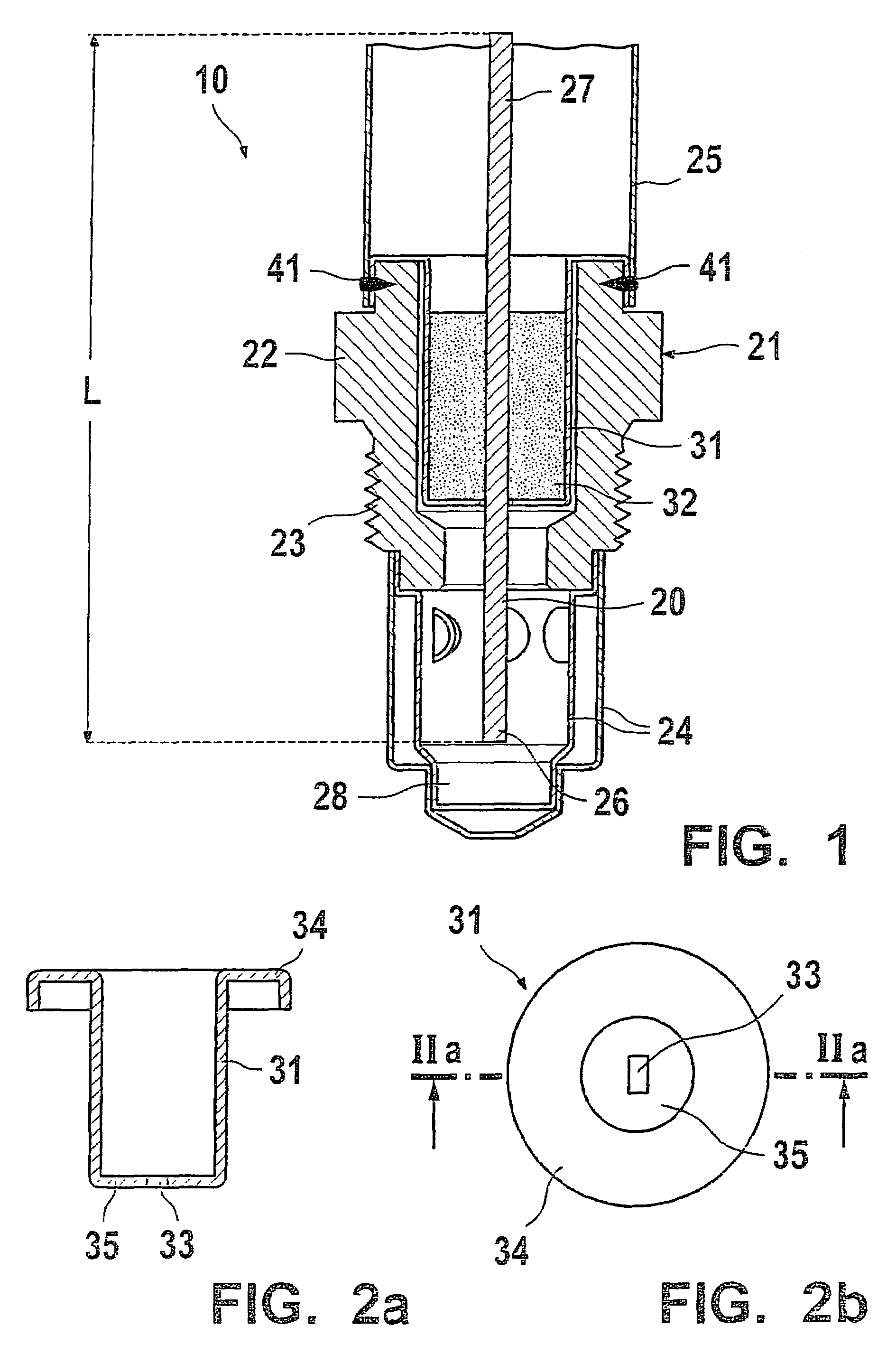Gas sensor and method for production thereof
a technology of gas sensor and production method, which is applied in the direction of instruments, specific gravity measurement, structural/machine measurement, etc., can solve the problems of high risk of cracking, complex manufacturing technology for sealing between the molded ceramic part and the housing, and often unavoidable slight warping of the sensor elements, etc., to achieve cost-effective and simple production technology
- Summary
- Abstract
- Description
- Claims
- Application Information
AI Technical Summary
Benefits of technology
Problems solved by technology
Method used
Image
Examples
Embodiment Construction
[0026]FIG. 1 shows a section of a gas sensor 10 as a first exemplary embodiment of the present invention. Gas sensor 10 is used for example to determine the temperature or the oxygen content of a measuring gas, and may be built into a measuring opening of an exhaust line of a combustion engine (not shown). Gas sensor 10 exhibits a housing 21 including threading 23 and a hexagon 22 for this purpose. Housing 21 encloses a planar, elongated sensor element 20, which is configured as a ceramic multi-layer system. On a first section 26, which is exposed to the measuring gas, sensor element 20 includes measuring elements such as electrodes or heaters. First section 26 of sensor element 20 protrudes from housing 21 into a measuring gas chamber 28, which is surrounded by a protection tube 24 affixed to housing 21. Protection tube 24 includes openings (no reference numeral) which may allow the measuring gas to access first section 26 of sensor element 20.
[0027]Contact points (not shown) are p...
PUM
| Property | Measurement | Unit |
|---|---|---|
| physical property | aaaaa | aaaaa |
| concentration | aaaaa | aaaaa |
| temperature | aaaaa | aaaaa |
Abstract
Description
Claims
Application Information
 Login to View More
Login to View More - R&D
- Intellectual Property
- Life Sciences
- Materials
- Tech Scout
- Unparalleled Data Quality
- Higher Quality Content
- 60% Fewer Hallucinations
Browse by: Latest US Patents, China's latest patents, Technical Efficacy Thesaurus, Application Domain, Technology Topic, Popular Technical Reports.
© 2025 PatSnap. All rights reserved.Legal|Privacy policy|Modern Slavery Act Transparency Statement|Sitemap|About US| Contact US: help@patsnap.com



